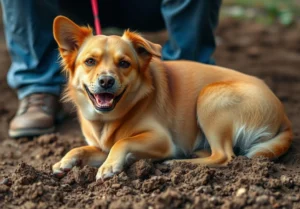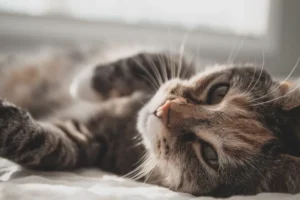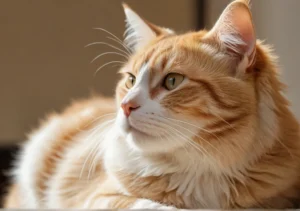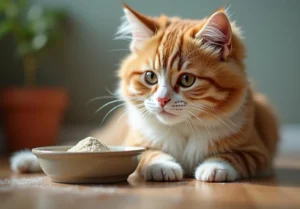Cats are known for their quirky behaviors and one common yet puzzling habit is when they fluff their head. Have you ever wondered why your furry friend does this? Let’s explore the reasons behind this intriguing feline behavior.
Understanding the Biology Behind Cat Grooming
Cats are meticulous groomers by nature, spending a significant amount of time each day tending to their fur. This behavior is not just about vanity; it serves a vital biological purpose. Grooming helps cats regulate their body temperature, distribute natural oils throughout their coat, and remove dirt and parasites.
When a cat fluffs his head, it’s often a part of this grooming ritual. By fluffing up their fur, cats can better reach areas that need cleaning and distribute oils effectively. This movement also helps them remove any tangled fur or debris that may be caught in their coat.
It’s essential for cat owners to understand the significance of grooming in maintaining their pet’s overall health and well-being. Regular grooming not only keeps their fur looking sleek and shiny but also prevents skin issues and matting that can lead to discomfort and health problems for the cat.
Exploring Instinctual Behaviors in Cats
Cats have retained many instinctual behaviors from their wild ancestors, and grooming is no exception. In the wild, cats need to keep their fur clean to maintain camouflage, regulate body temperature, and communicate with other animals through scent.
Fluffing the head can also be a way for cats to mark their territory. The oils produced by their skin contain unique scents that help them establish boundaries and communicate with other cats in the area. So, when you see your cat fluffing his head, he may be instinctually marking his territory and ensuring other cats know he’s around.
As cat owners, it’s essential to recognize and respect these instinctual behaviors in our feline companions. By understanding why cats behave the way they do, we can better meet their needs and provide a stimulating and enriching environment for them to thrive.
The Significance of Scent Marking
Cats are notorious for being territorial creatures, and one common way they assert their ownership is through scent marking. When a cat fluffs his head, he is actually releasing pheromones from special glands located on his face. These pheromones act as a communication tool, telling other felines that this territory belongs to him. So, the next time you catch your cat fluffing his head against a piece of furniture or even against you, just know he’s leaving his mark in a subtle yet potent way.
Additionally, a cat may also fluff his head as a way to reaffirm his own sense of security within his territory. By leaving his scent around, he is creating a familiar environment that helps him feel safe and comfortable in his surroundings. So, next time your furry friend decides to mark his territory with a head fluff, remember that it’s all just part of his natural instinct to claim his space.
Stress and Anxiety Triggers
Stress and anxiety can take a toll on our feline friends just as they do on us. One way cats cope with these negative feelings is through grooming behaviors, such as fluffing their heads. When a cat is feeling stressed or anxious, he may turn to self-grooming as a way to soothe himself and regain a sense of control. Fluffing his head can be a way for him to release tension and ground himself in his familiar scent.
If you notice your cat excessively fluffing his head or engaging in other grooming behaviors, it may signal that he is experiencing heightened stress or anxiety. To help alleviate these feelings, consider providing your cat with a calm and secure environment, plenty of interactive playtime, and even the use of pheromone diffusers to create a soothing atmosphere. By addressing the root causes of stress and anxiety, you can help your feline friend feel more comfortable and content in his surroundings.
Health Issues and Underlying Causes
Your furry friend might be fluffing his head more than usual, and that could be a sign of an underlying issue that needs attention. Excessive head fluffing in cats can be caused by various health problems, such as ear mites, allergies, skin infections, or even dental pain. If you notice your cat constantly fluffing his head, it’s vital to consult your vet for a thorough examination to rule out any potential health concerns. Remember, our cats can’t tell us when something is wrong, so it’s up to us to look out for any unusual behaviors like excessive head fluffing. Always prioritize your cat’s well-being and seek professional help if needed.
Practical Tips for Cat Owners
When it comes to managing your cat’s head fluffing behavior, proper grooming is key. Regularly brush your cat’s fur to prevent matting and tangles that could lead to discomfort and excessive head fluffing. Additionally, ensure your cat’s environment is enriched with plenty of interactive toys, scratching posts, and cozy hiding spots to keep him mentally stimulated and engaged. Providing a well-rounded environment can help reduce stress and anxiety, which may contribute to head fluffing. Remember, a happy and healthy cat is a fluff-free cat!
Helpful Tips to Manage Head Fluffing:
- Groom Regularly: Brush your cat’s fur to prevent matting.
- Provide Enrichment: Offer interactive toys and scratching posts.
- Check for Stress: Minimize environmental stressors to reduce head fluffing.
- Consult Your Vet: If head fluffing persists, seek professional advice.
- Maintain Dental Health: Dental issues can sometimes cause head fluffing.
Fun Facts About Cat Grooming
Did you know that a cat fluffing his head is actually part of their grooming routine? Cats use this behavior to clean themselves and regulate their body temperature. When a cat fluffs his head, he is essentially redistributing natural oils produced by his skin to keep his fur healthy and shiny. This grooming habit also helps cats remove dirt, debris, and loose hair from their coat.
Apart from grooming, cats fluff their heads as a way to mark their territory. Cats have scent glands located on their heads, and when they rub or fluff their heads against objects or people, they are leaving their scent behind as a way to claim ownership or show affection.
Interestingly, cats groom each other as a sign of social bonding and to reinforce their relationships within a group. So, the next time you see your cat fluffing his head, remember that it’s a natural and instinctual behavior that serves multiple purposes beyond just looking adorable.
Unique Insight: Fluffing the head also aids in reducing stress and anxiety levels in cats by releasing pheromones that help them feel relaxed and secure in their environment.
Now, let’s dive into some more fun facts about cat grooming habits:
- Cats are meticulous groomers: On average, cats spend about 30-50% of their waking hours grooming themselves. This behavior not only keeps their fur clean but also helps them cool down and maintain their overall health.
- Grooming is a form of communication: When cats groom each other, it’s not just about hygiene. It’s also a way for them to bond, show affection, and establish social hierarchy within a group.
- Over-grooming can be a sign of stress: If a cat is excessively grooming to the point of causing bald patches or skin irritation, it could be a sign of underlying stress or anxiety that needs to be addressed.
Remember, understanding your cat’s grooming habits can give you valuable insights into their well-being and overall happiness. So, the next time you see your feline friend fluffing his head, know that he’s not just being cute – he’s taking care of himself in more ways than one.
Alex, a passionate animal lover, has experience in training and understanding animal behavior. As a proud pet parent to two dogs and three cats, he founded AnimalReport.net to share insights from animal experts and expand his knowledge of the animal kingdom.




